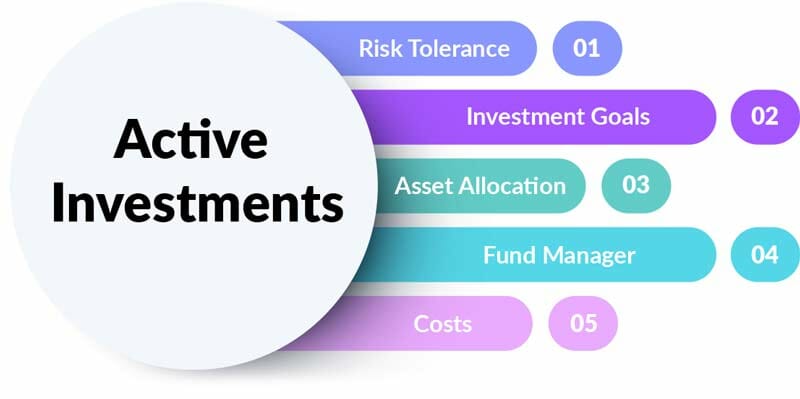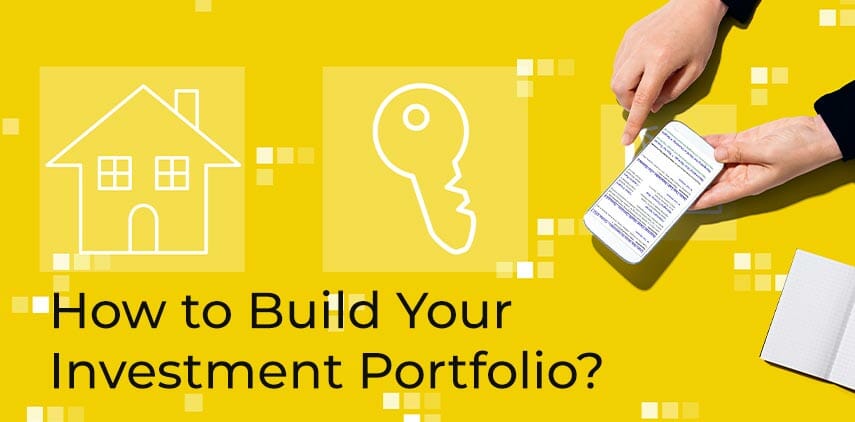Where Is the Future of Active Investing?
Active investing has been a common practice among investors since the beginning of financial markets. From longer-term stock strategies to shorter-term day trading, active management is all about taking advantage of any opportunity within the market to earn returns. With this in mind, it’s important to keep up with the latest trends and developments to remain competitive and successful in such a dynamic field. The future of investing lies in understanding how the ever-evolving technological landscape will shape how we manage our money and investments in the years to come.
But in recent years, technological advancements and low-interest rates have caused changes in preferences among both institutional and individual investors, leading many to question what lies ahead for active investing.
In this post, we’ll explore some current trends around actively managed investments and discuss how they may shape the overall trajectory of investment tactics going forward.
What Is Active Investing?
Active investing is an investment strategy in which a portfolio manager actively selects securities with the goal of outperforming the benchmark index. This approach seeks to capitalize on market inefficiencies by making timely decisions based on research and analysis. Active investors take greater risks than passive investors, but with the reward of higher returns for their effort.
The traditional active investing model has been used for decades, but modern active investing strategies are more sophisticated than ever before. New technology and data analytics can be used to identify trends, analyze risk factors and develop predictive models that help managers make better-informed decisions. By incorporating these new tools, active investors have become increasingly successful at achieving their desired results.
Benefits of Active Investing
Active investing has some distinct advantages when it comes to building a successful portfolio. Active investing involves selecting stocks that are believed to have the potential for greater gains than the rest of the market, which can be done through individual stock selection or by investing in mutual funds or ETFs that track certain indices.
The most significant benefit is that actively managed investments often outperform passively managed ones over time. This means more money in your pocket and better returns on your investment.
Another key advantage of active investing is that you have more control over your portfolio and its performance. When you choose investments yourself, you’re making decisions based on research, analysis, and experience rather than relying solely on a predetermined index fund or algorithm. This allows you to tailor your investments to suit your individual goals and risk tolerance.
Additionally, active investing allows for more diversification within a portfolio. This is especially beneficial for those seeking to protect against market downturns by spreading the risk of their portfolio over multiple assets or sectors.
Actively managed funds can often take advantage of short-term market opportunities that passive investors may miss out on. Such opportunities could include rebalancing portfolios to take advantage of price movements in certain stocks or sectors, as well as buying into undervalued markets before they rise again.
Flexibility and adaptability are two more benefits of active investing. Through actively managed funds, investors can easily adjust their strategies as market conditions change, giving them a better chance to maximize their returns.
Tax management – Active investors can use their investment decisions to minimize taxes over time. By making smart and timely investments, they may be able to take advantage of tax-advantaged vehicles or strategies that will benefit them in the long run.
What Should You Consider When Making Active Investments?
Before making an active investment decision, there are several factors that should be taken into consideration. Here are some of the crucial factors you need to consider when making active investments. They include:
- Risk Tolerance: Every investor needs to assess their risk tolerance before making any active investments. This means understanding your financial goals and how much risk you are willing to take in order to achieve them.
- Investment Goals: It is important to have a clear understanding of what you want out of the investment, and how quickly or slowly you expect to get it. Having realistic expectations will help you make better decisions and stay on track with your goals.
- Asset Allocation: The asset allocation of your active investments should be based on your risk tolerance, investment goals, and time horizon. This helps ensure that your portfolio is properly diversified across different asset classes to spread out the risks associated with any one investment.
- Fund Manager: Before making any active investments, it is important to research the fund manager’s track record and reputation in the industry. This will give you an idea of their success rate and how well they manage money.
- Costs: Active investments typically come with higher costs than passive investments due to the additional resources used for research and management of the portfolio. It is important to weigh these costs against the potential benefits of active investing before making a decision.
By considering all of these factors carefully, investors can make informed decisions that are tailored to their individual needs and goals. With careful planning and discipline, active investing can be a great way to grow wealth over time.
Risks of Active Investing
Active investing is not without its risks. Some of the biggest concerns with active investing include the potential for higher transaction costs, underperformance compared to market returns, and concentrated portfolios.
Transaction costs such as commissions on bought and sold securities can add up quickly when using an active investment strategy. This means that a portion of your return may go towards paying brokerage fees rather than directly into your pocket. Additionally, it has been shown that actively managed funds have a tendency to underperform passively managed funds over time due to the additional cost associated with trading.
Another risk of active investing is that portfolio managers may make concentrated investments in a few stocks or industries which increases volatility and exposes investors to greater losses if these investments do not pan out. Active investors must be aware of the potential for market downturns and should always maintain a diversified portfolio to reduce their exposure to risk.
What’s more, active investing requires more dedication from an investor than passive investing does. Investors who are new to the stock market may find it difficult to research securities, analyze financial reports, and make informed decisions about where and when to invest their money. This can lead to bad investment choices which could result in significant losses.
Active vs Passive Investing
You already know about active investing. But what is passive investing? Passive investing is a method of relying on indexes and broad-based investment strategies such as exchange-traded funds (ETFs).
The debate between active and passive investors has been ongoing for decades. Proponents of passive investing argue that it can provide better risk-adjusted returns over time due to its lower fees and ability to track the performance of a particular index. On the other hand, active investors usually have an edge when it comes to research, analysis, timing, and picking individual securities with high returns.
Which Is the Best Option?
The choice between active and passive investing ultimately comes down to the individual investor’s risk tolerance and goals. Active investors are more likely to beat the market in any given year, but over time the costs associated with researching and trading actively can erode away at gains. It’s important to note that past performance is not always indicative of future performance, so it’s a good idea to do your own research before deciding which investing strategy is right for you.
Is the Future Bright for Active Investors?
Active investors have been under pressure for years, as low-cost passive investing has gained popularity and outperformed the active investment model. But does this mean that active investing is a dead end? Not necessarily – although it may require some changes in order to remain competitive.
One of the biggest challenges facing active investors is adapting to changing market conditions. As markets become more efficient, it’s increasingly difficult for active managers to outperform their passive counterparts. This means that they need to develop strategies that are flexible and which allow them to adjust quickly when needed.
In addition, an increasing focus on fees and costs can affect the ability of active investors to generate returns over time. Low-cost passive investments have a huge advantage in this regard, and active investors will need to be aware of these cost concerns when developing their strategies.
The emergence of new technologies such as artificial intelligence (AI) may also have an impact on the future of active investing. AI can be used to identify patterns and trends which could give active investors a competitive edge. However, it is important to remember that AI has its limits and may not always be the most reliable source of information.
Conclusion
Overall, the future of active investing is uncertain but there are still opportunities for those who are willing to adapt. Active investors need to develop strategies that allow them to take advantage of changing market conditions and emerging technologies in order to remain competitive. With a focus on fees and costs, as well as an understanding of how AI can be used effectively, active investors have a chance at succeeding in today’s markets.
The key lesson? Despite the challenges facing active investors today, there is still potential for success with careful planning and adaptation. Those who are able to stay ahead of the curve will likely find success in the future of active investing.
mete description with the text “”future of investing”: As active investors face an increasingly complex market, they need to plan and adapt in order to remain competitive. With careful fee and cost analysis, combined with the utilization of emerging technologies like AI, there are still opportunities for success. Those who are able to stay ahead of the curve will be well-positioned to reap rewards from the future of investing.













